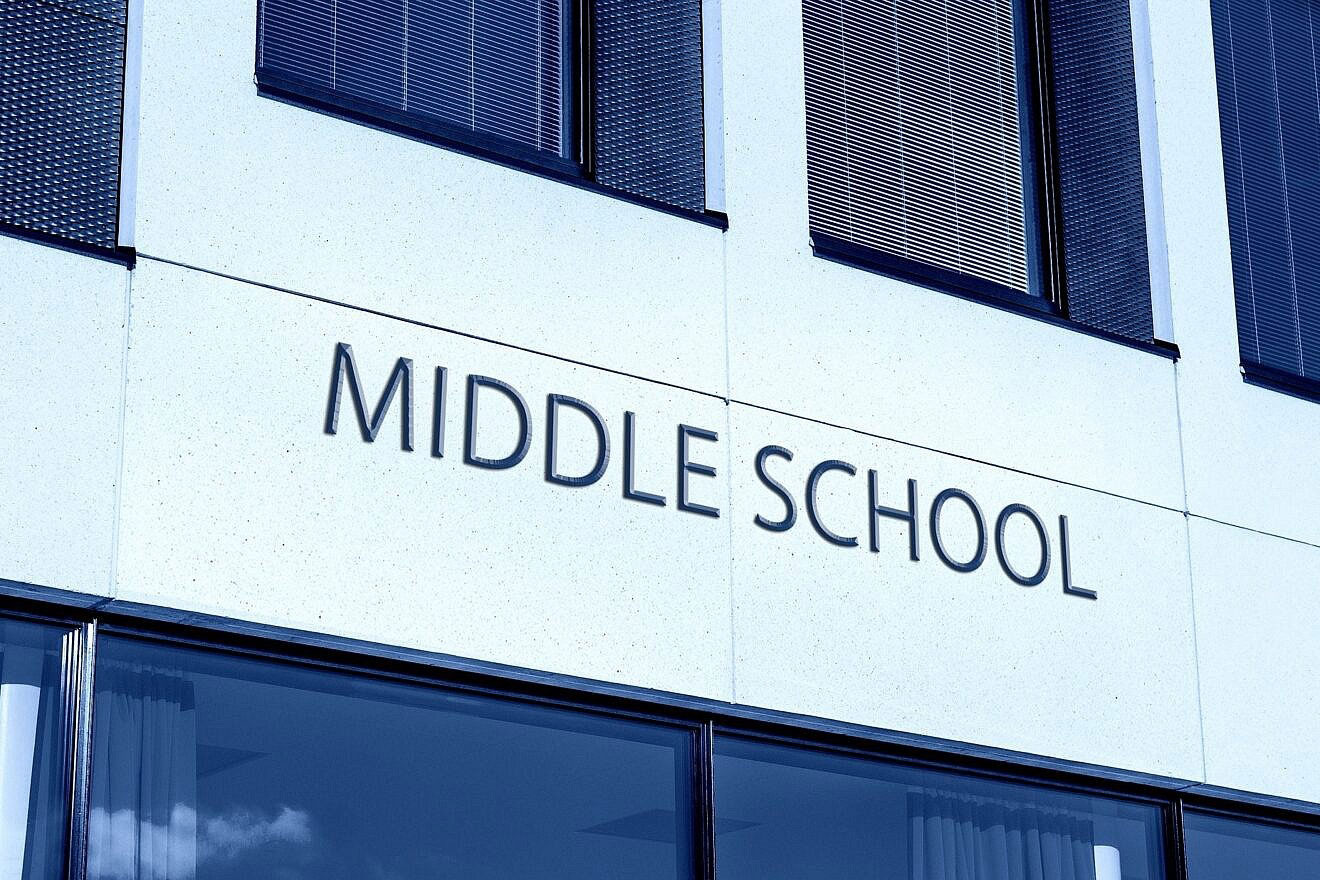(JTA) — Two Philadelphia-area Conservative synagogues were vandalized in similar incidents over the past several days, the latest in a growing number of Jewish institutions to be targeted since the outbreak of the Israel-Hamas war six months ago.
The incidents prompted rebuke from Pennsylvania’s Jewish governor, Josh Shapiro, as well as from national figures including CNN anchor Jake Tapper, who is Jewish and had his bar mitzvah at one of the targeted synagogues.
That synagogue, Temple Beth Hillel-Beth El in the suburb of Wynnewood, had a banner expressing solidarity with Israel tagged with a swastika over the weekend. Another synagogue, Temple Beth Zion-Beth Israel in Center City, had graffiti spray-painted on the sidewalk by its entrance last week.
“This is the second message I’ve written like this in as many days. It’s two too many,” Shapiro wrote on social media Sunday while linking to a story about the Beth Hillel-Beth El graffiti. “Antisemitism and the vandalism of a house of worship of any kind have no place in this Commonwealth.”
Other Jewish institutions have been targeted across the country in the wake of the war, including in the Philadelphia region just weeks ago: “Free Gaza” graffiti was spray-painted on a Jewish-owned business in nearby Narberth on March 15. (The owner of the business is an Israeli who has relatives being held by Hamas in Gaza.) Last week federal authorities also charged a West Michigan man with damaging religious property after he spray-painted swastikas onto a Chabad house in Kalamazoo in November and defaced a large menorah posted outside the center.
But the prominence and proximity of these two synagogues made the recent incidents stand out.
“Last night someone spray painted a swastika at the synagogue where I was bar mitzvahed,” Tapper wrote online on Sunday.
It was the second time in as many weeks that Beth Hillel-Beth El’s Israel banner had been defaced. The first time the previous weekend, nondescript paint was splashed onto the banner, which reads, “Our Community Stands With Israel.” The community replaced the banner the next day and intends to do so again now that it’s been defaced for the second time, its senior rabbi told the Jewish Telegraphic Agency.
“Thank G_d the community is OK,” Rabbi Ethan Witkowsky said. “We’re shaken, but we’re strong and we’re healthy and safe.”
The synagogue’s leadership offered a more pointed rebuke of the graffiti on social media. “A swastika is not a commentary on the policies of the State of Israel, nor is it a sign of solidarity with Palestinians,” they wrote over the weekend. “It is a symbol of hatred and division.”
Leadership at Temple Beth Zion-Beth Israel did not immediately return requests for comment. But local reports of that synagogue’s graffiti indicate that it was more explicitly connected to Israel than the Beth Hillel-Beth El case.
Security footage shows two women using stencils to spray-paint a phrase outside the synagogue. Andrew Goretsky, the Anti-Defamation League’s regional Philadelphia director, told JTA that the phrase was the disputed pro-Palestinian rallying cry “From the river to the sea,” which many Jews consider to be a call for the destruction of the state of Israel.
“As a Jewish person, when we hear ‘From the river to the sea, Palestine will be free,’ we hear a threat to half of the people in the entire world who share our identity,” Goretsky told local news outlets. Approximately half of the world’s Jewish population lives in Israel.
Authorities have not indicated whether they see the cases as connected. While Shapiro wrote on social media that the Pennsylvania State Police is “coordinating with our law enforcement partners” on the incidents, a spokesperson for the state police told JTA that local authorities had rejected their offer of help and were handling each case in their own jurisdiction.
Regardless, local Jewish leaders told JTA they appreciated the broader shows of support.
“It is heartwarming to have our officials care about this,” Witkowsky told JTA. “In many ways I think that the great fear of our community is not that someone would paint a swastika on the sign. It’s that someone would paint a swastika on the sign, and no one would care.”





